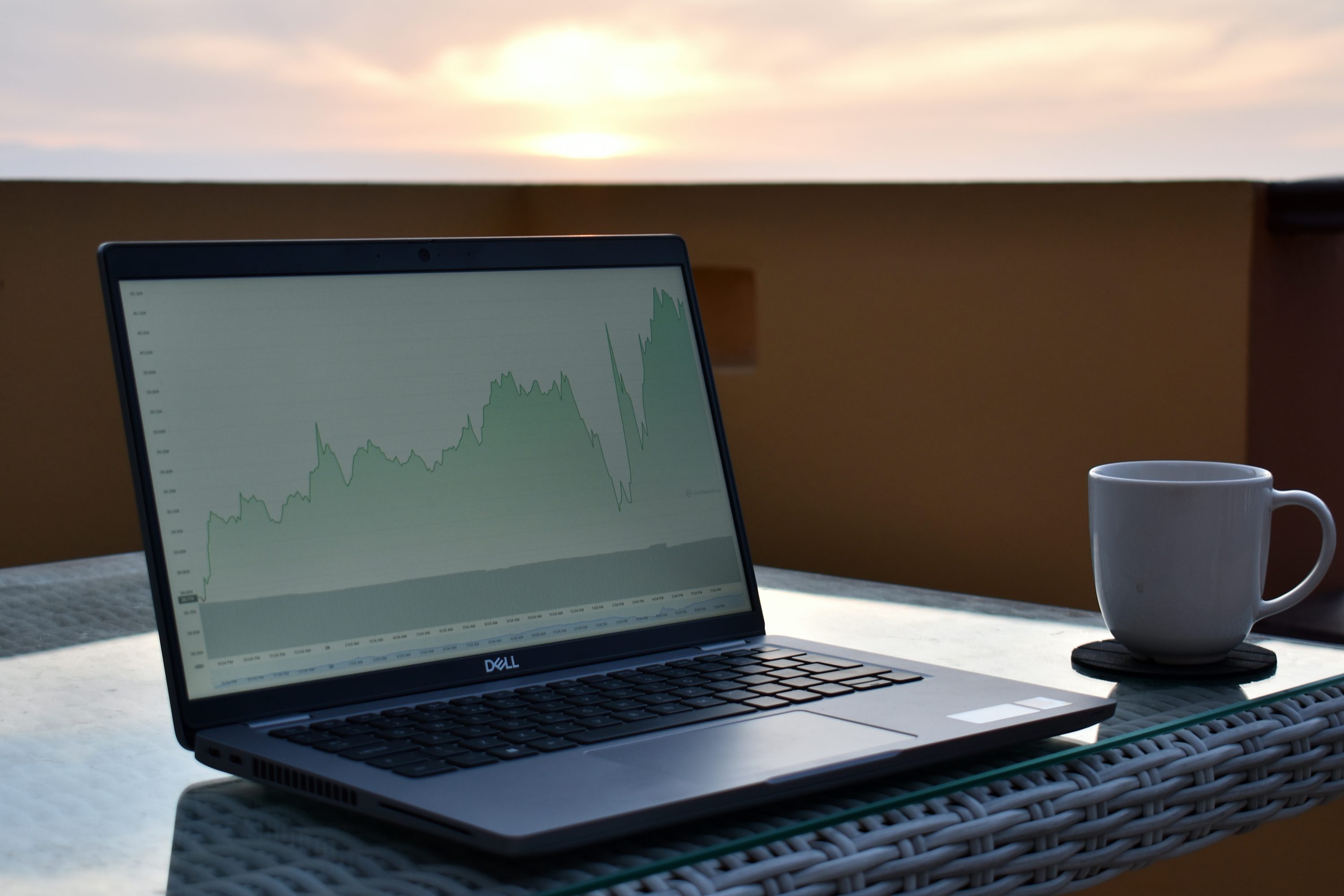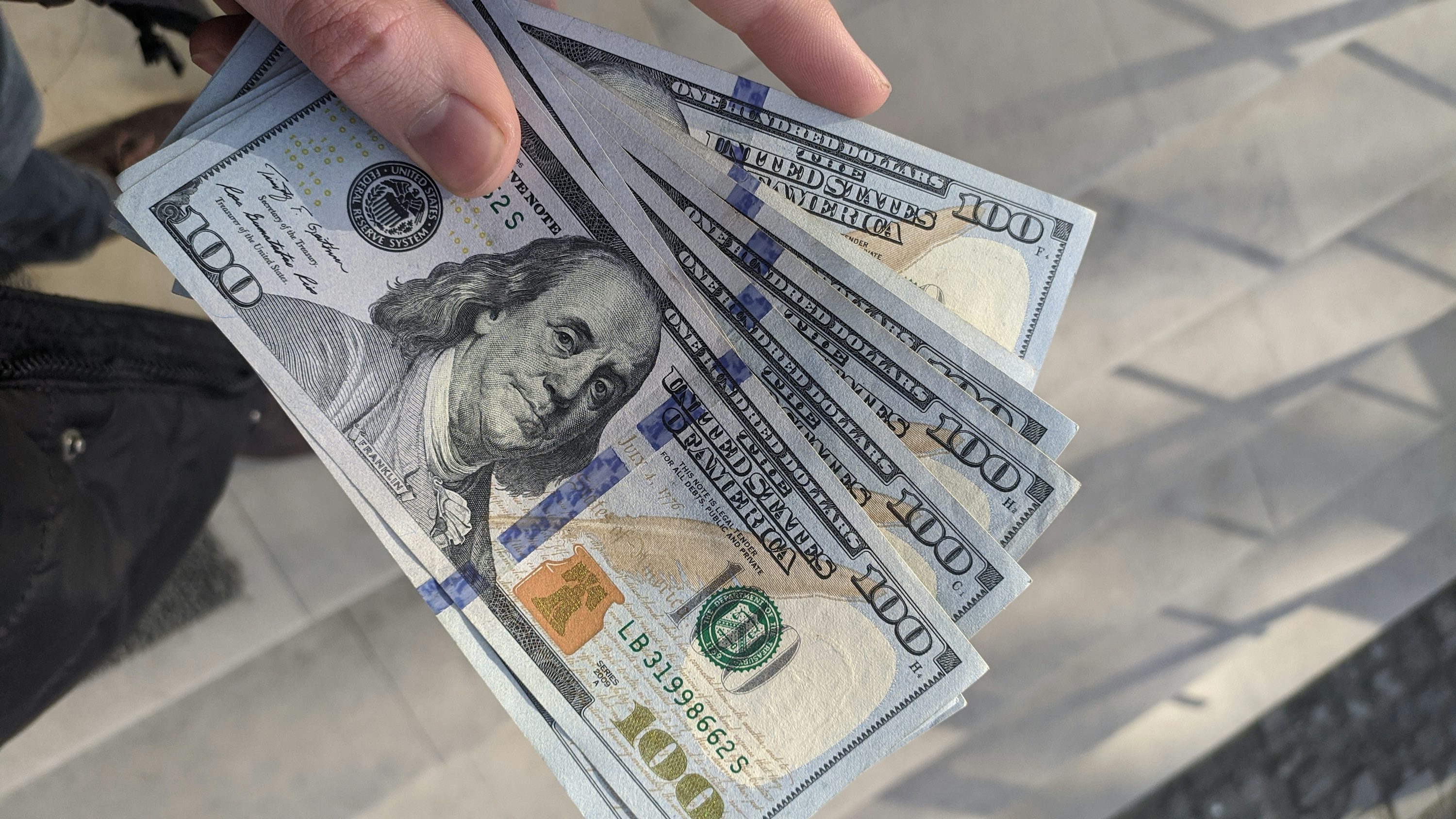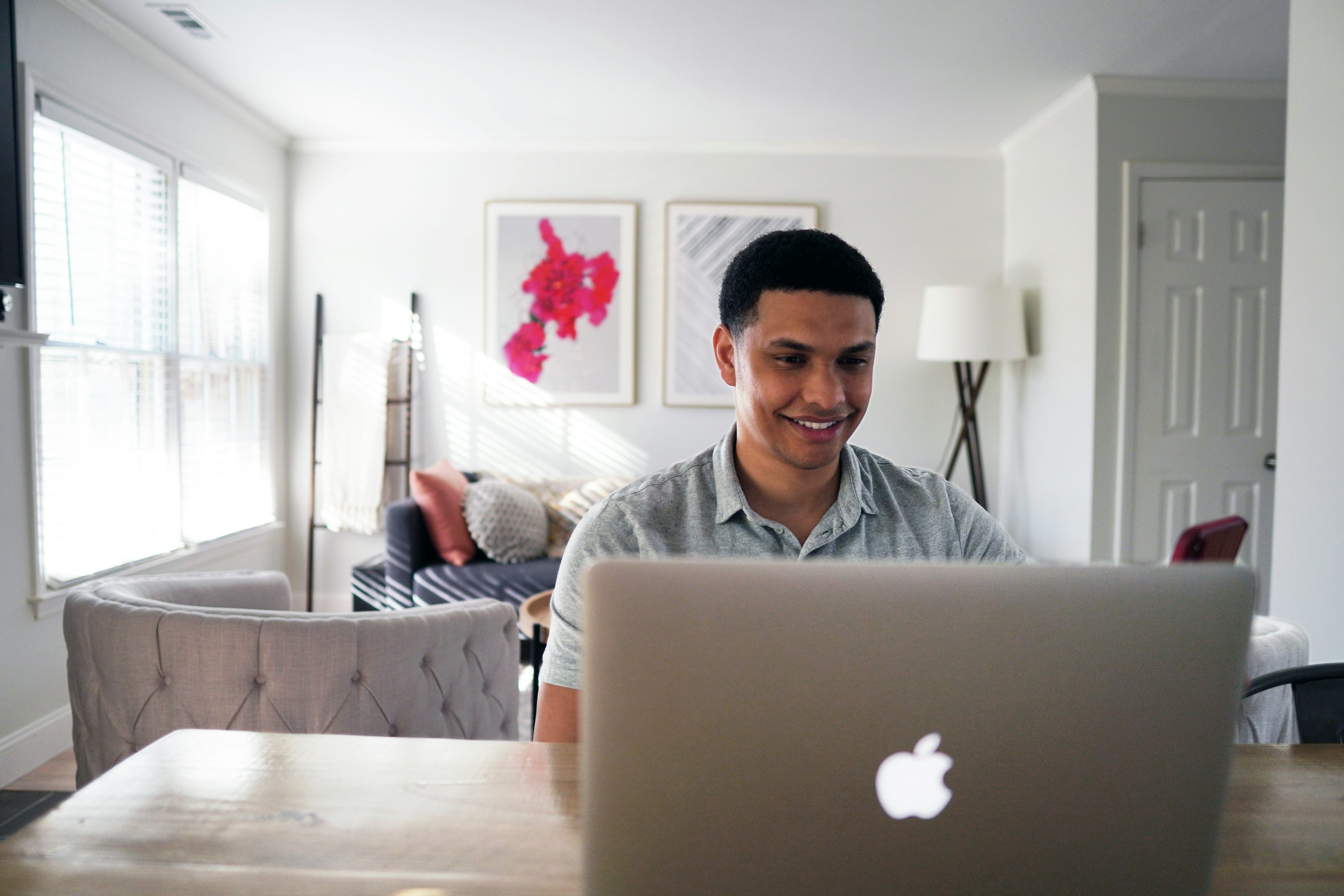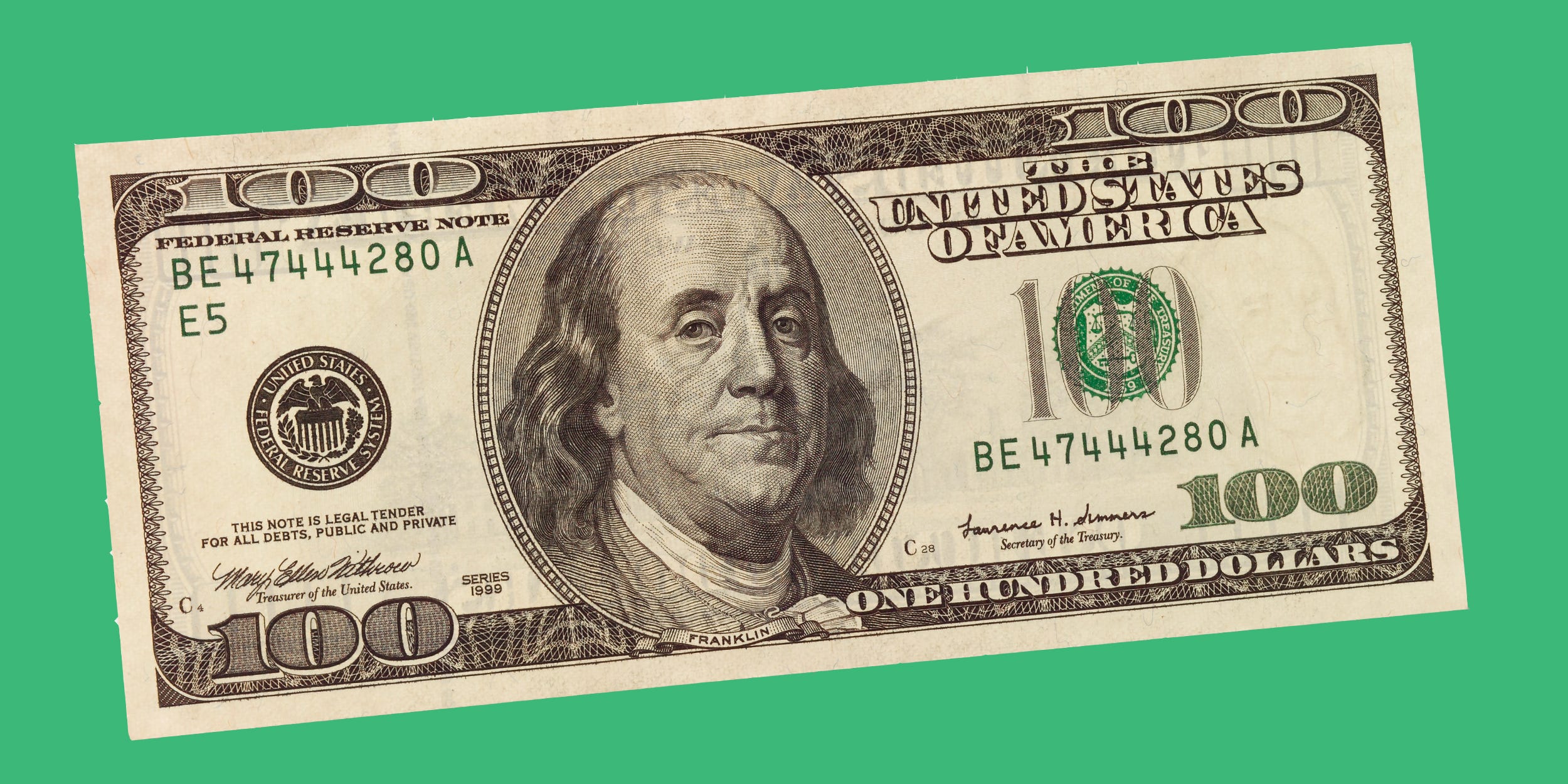Leverage Trading for Beginners is important because it demonstrates how small account movements can control larger positions, providing a practical route for anyone facing the common challenge of trading with limited capital.
Your savings are limited, or you want to learn without risking your rent money. What do you do next? What if you could access trade capital through funded trader programs, practice on demo accounts, and learn risk management without a personal deposit?
This guide provides a clear, practical roadmap for starting to trade with no money, covering evaluation steps, profit split models, and the simplest ways to transition from paper trading to a funded account.
One practical option is Goat Funded Trader, a prop firm that offers funded accounts after a straightforward evaluation, allowing you to trade real capital without upfront personal funds, follow transparent rules, and retain a share of the profits.
Summary
- Most new traders burn out quickly, with over 60 percent quitting within the first three months, and only about 10 percent ever becoming consistently profitable. This underscores that structure and repeatability matter more than early wins.
- Simulators and demo accounts require realistic constraints to function effectively, as traders should aim for a minimum sample size of roughly 1,000 trades to separate skill from luck and expose execution flaws.
- Tiny accounts are brittle, with $200 to $500 labeled as fragile, $1,000 considered workable for basic sizing, and $2,000 providing meaningful breathing room. Regulatory rules, such as the $25,000 PDT threshold, materially change leverage assumptions.
- Simple behavioral drills drive measurable change, for example, compliance with a five-minute pre-session checklist rose from 22 percent to 78 percent in a 60-day cohort, and those traders sustained smaller drawdowns under stress.
- Payout viability depends on loss control and reward framing, with stop losses reducing losses by up to 50 percent, and adopting a 1:3 risk-reward ratio shown to boost profitability by approximately 30 percent.
- High leverage on tiny balances creates fast failure modes. For example, a 1:100 leverage ratio lets $100 control $10,000, so a 1 percent move equals roughly a full account gain or loss, making margin calls immediate.
- This is where Goat Funded Trader comes in, by providing simulated accounts and structured challenges that allow traders to practice under real execution rules and build verifiable track records without risking personal savings.
9 Ways to Start Trading With No Money

You can start trading with no money by combining small, conditional capital offers, realistic simulated practice, and access to funded programs that let you trade institutional-sized allocations while you prove consistency. Each approach has tradeoffs. Read the rules, simulate real constraints, and treat every free capital source as a training contract, not a shortcut to quick gains.
1. Utilize Forex no-deposit bonuses
No-deposit bonuses give you tiny real capital to learn order entry, stop placement, and discipline without risking your cash, but they come with strings. Read minimum turnover, withdrawal, and expiry clauses before you accept anything; use the bonus to test one clear rule set, for example, only risking 0.5 percent of the bonus per trade and logging every outcome so you learn process over luck.
2. Practice with free trading simulators
Simulators are the most cost-effective way to develop technical habits, backtest entries, rehearse exits, and create a measurable edge in execution. When you use simulators, force real constraints: slow down order execution to mimic slippage, use realistic margin and commission settings, and set a weekly review to prevent the common habit of treating paper accounts like arcade games.
3. Open broker demo accounts
Demo accounts teach you platform mechanics and broker-specific quirks without cash on the line. Because demo data can be delayed or sanitized, add self-imposed stressors: limit your demo capital to the size you would actually trade, impose time pressure, and simulate drawdowns so you practice emotional recovery before you meet real losses.
4. Explore zero-commission brokers
Zero-commission can cut costs, but they often monetize in other ways, such as wider spreads or payment for order flow. Compare effective cost, not headline fee; measure average spread over the trading hours you prefer, and calculate how many losing trades a small account can survive after spread and financing are applied.
5. Take trading jobs at financial firms
Working at a prop desk or trading group gives you a salary, mentoring, and capital to trade. Competition is stiff: most firms seek demonstrable results, quantitative aptitude, and clean risk management practices. If you pursue this route, build a concise, verifiable track record over 60 days of consistent process, and learn the firm’s risk rules before you ask for a trading seat.
6. Take advantage of sign-up and referral bonuses
Stacking legitimate sign-up and referral credits can reduce friction when you move toward a funded account, but treat them like one-time boosts, not a bankroll. Always check eligibility limits and required minimum trade volumes; use the credits to practice executing your rules under live fills, then clear them before making behavioral changes that depend on larger balances.
7. Enter trading contests
Contests require speed, discipline, and competitive benchmarking, and reputable ones can offer cash prizes or provide career opportunities. Choose contests with transparent rules and realistic order execution; use them to test pattern recognition and trade frequency under pressure, then analyze your contest sessions the same way you would a losing month.
8. Pursue becoming a professional trader
Moving into a professional role requires skill diversification beyond simple discretionary calls, often demanding programming, statistics, or systematic strategies. If you want that path, start small: automate your lowest-edge tasks, document your edge with a three-month P&L ledger, and target internships or junior roles where your production can be reviewed and scaled.
9. Join proprietary trading firms
Prop firms can supply capital and structure while you trade, providing a real bridge between simulators and risking personal funds. They vet contracts for realistic drawdown rules, profit split clarity, and scaling plans. Use prop challenges to build a verified track record, but treat passing a challenge as a step one; discipline and risk control should be the required daily work afterward.
When we trained new traders for over 60 days, a pattern emerged: they trusted demo wins too easily and folded under marketing pressure when brokers encouraged them to open live accounts, which explains why over 60% of new traders quit within the first three months. That figure comes from Day Trading in 2025: A No-BS Guide for Beginners (2025) and highlights how fragile early momentum can be.
The hard truth is that not every path scales; only 10% of traders are consistently profitable. That statistic is reported in Day Trading in 2025: A No-BS Guide for Beginners (2025) and underscores why process and repeatability must be your priorities, not quick wins.
Most traders follow a familiar route of building skill privately and then switching to live capital when they feel ready, which makes sense early on. The hidden cost becomes apparent when psychological and execution gaps emerge under real-world pressure, resulting in inconsistent performance and wasted months. Solutions like prop firm style programs centralize funding, provide clear scaling rules, and move the friction from sourcing capital to proving consistent risk-adjusted results, letting traders iterate faster without risking their savings.
Practical checks you must run before using any free or funded route
- Read every clause about withdrawals, expiry, and trade count.
- Force realistic slippage and commission into demo runs.
- Track emotional responses to drawdown with time-stamped notes so you can fix behavior, not just tactics.
- Verify proof of payouts for funded programs and ask for recent payout timelines.
I know this work feels exhausting when your capital is small and the rules are dense; that pressure explains why many give up, but it also clarifies the skill set that actually matters — repeatable risk management, honest record keeping, and patience. If you build those three things, the tactical choices above become tools, not traps.
Goat Funded Trader offers simulated accounts and structured challenges that allow you to trade large allocations and build a verified track record without depositing your own capital. Traders find that prop firm-style programs compress the learning curve by turning raw practice into measurable outcomes. Try a simulated challenge to practice with real execution rules and fast payouts while you prove the habits that matter.
What happens when funding meets real discipline is where the real test begins, and that’s what comes next.
How Much Money Do You Need To Start Trading?

You do not need a fortune to start trading, but you do need a defensible bankroll that lets you size positions, pay fees, and survive realistic streaks of losing trades. Aim for enough capital that risking 1 percent per trade produces position sizes that actually move the needle, while keeping a separate cash buffer for living costs and learning expenses.
How much should a beginner bring to the table?
If you plan to use leverage, $200 to $500 is a brittle starting point, $1,000 is workable for basic sizing in many retail environments, and $2,000 or more gives you breathing room to manage stops, spreads, and financing without constantly being flattened by transaction costs. Remember the U.S. pattern day trader rule, which requires $25,000 to freely day trade on margin in a standard equities margin account, so check account rules before assuming leverage will be available.
How do you translate risk rules into dollar amounts?
Use a simple formula, then test it to verify its accuracy. Pick a risk limit, commonly 1 percent of your trading capital per trade. If your account balance is $1,000, 1 percent is $10, so your stop size must convert to a monetary loss of no more than $10 per trade after spread and fees. If your stop width forces you to risk $50 per trade, you either reduce position size, widen your account, or accept a smaller risk percentage. This arithmetic is non-negotiable; small accounts force two bad choices, either tiny positions that never generate meaningful edge or overleveraged bets that blow the account.
What hidden costs do beginners underestimate?
Commissions, spreads, slippage, overnight financing, market data fees, and the mental cost of time are all real costs. Those fees are visible on every trade, but the real leak happens when small accounts suffer frequent stops because they cannot absorb normal market noise. This pattern appears consistently with care-dependent traders and part-timers: limited capital pushes them into higher risk per trade or tiny, demotivating positions, creating stress that compounds decision errors.
The proof you should require before scaling
You need a sample size big enough to separate skill from luck. A practical benchmark that many experienced traders use is approximately 1,000 trades as the minimum for a reliable sense of execution quality and edge, according to Quantified Strategies, which highlights why early performance spikes can be misleading. If you cannot afford to make that many live trades, prioritize structured simulated runs that mimic real costs and order flow until your process survives substantial sample noise.
Why the usual “scrape-savings-and-go” approach breaks down
Most new traders cobble money together because it feels like the only path, and that method is understandable. The hidden cost is cumulative, subtle, and psychological: small-account stress shortens time horizons, encourages revenge trading after a loss, and amplifies the impact of fees when that stress becomes the driver. As a result, skill development stalls, and capital drains faster than you can learn.
How an alternative funding model changes the math
Most people fund themselves because it seems simpler, but as capital needs grow, that approach creates friction and wasted months resolving solvable operational problems rather than leveraging their trading skills. Platforms like GoatFundedTrader offer simulated funding pathways and structured scaling, allowing traders to practice with larger allocations under realistic constraints, thereby preserving the key learning pressure while eliminating the upfront need to risk personal savings. Traders find that moving the capital question off the table speeds meaningful feedback loops, so you iterate on risk control and execution rather than on whether you can scrape together another deposit.
A practical checklist for deciding your starting amount
- Calculate a 1 percent per-trade risk and convert that into position size and stop distance, including likely spreads.
- Add three months of living expenses as an emotional buffer separate from trading capital, especially if you balance caregiving or irregular work.
- Factor in recurring platform or data fees and aim to cover them for at least two months without trading profits.
- Commit to a trade-sample plan that reaches toward the 1,000 trades benchmark, either live or in a realistic simulated environment, before you increase leverage or scale position sizes.
Trading capital is not just money; it is the platform underpinning your decisions; treat it accordingly. The real cost shows up not in the first week, but in the month you meet a losing streak and need rules you can trust.
That fragile month separates hopeful beginners from traders who actually last.
Related Reading
- Are Small Caps a Good Investment Now
- Can Forex Trading Make You Rich
- Best Timeframe For Swing Trading
- How to Get Free Stocks
- How to Trade Forex With $100
- Best Market To Trade For Beginners
- How Much Money Do You Need to Start Trading
- How to Start Trading With No Money
- How Long Does It Take To Become A Profitable Trader
- Which Trading Is Best For Beginners
- Is Futures Trading Profitable
- Trading Vs Investing
How to Learn Trading With No Money

You can learn to trade with no money by turning practice into measurable experiments, trading processes instead of hope, and building verifiable proof that your edge survives realistic stress. Focus on repeatable signals, strict risk budgets for each practice session, and recording objective evidence you can show later to funded programs or employers.
What exact numbers should you measure during practice?
Track entry quality, execution slippage, time-in-trade, and session-level volatility, all tied to outcome per trade. Quantify not just wins and losses, but inches gained toward a predefined edge, for example, the percentage of trades that meet your strict entry criteria and are closed according to your rules. When we coached traders across a 90-day sprint, the clearest predictor of later consistency was not raw win rate; it was the stability of those process metrics under minor stressors, such as 5 to 10 percent wider stops and simulated spread increases.
How do you design a reproducible trade experiment?
Treat every new idea like a lab test: write a hypothesis, code or document exact entry and exit rules, define a sample size, and set a failure threshold that forces iteration. Use historical replay with recorded fills to compare planned versus actual execution. Record each session, timestamp your trades, and attach a short rationale line for every decision, then run the experiment until you hit your stopping condition, whether that is statistical confidence, a preset drawdown, or a fixed number of trades.
How should you stress-test decisions before risking real capital?
Use progressive constraints to reveal brittleness: first add latency to order entry, then widen spreads and reduce position size, and finally force multi-day drawdowns in your simulation. This exposes failure modes that few notice until live money is on the line, such as strategy collapse when volatility regimes shift or when you cannot maintain discipline after a streak of small losses. Think of this as controlled exposure, where you only move to the following constraint after reliably passing the current one.
What common approach causes the most extended delays in progress?
Most traders iterate privately by chasing strategy tweaks and celebrating small, lucky runs, because tweaking feels productive and it is familiar. That pattern erodes time, it hides variance as skill, and it converts months of potential learning into noise. Platforms like GoatFundedTrader address this friction by providing structured environments with detailed execution logs, transparent scaling rules, and timestamped proof of performance, letting traders replace subjective anecdotes with objective evidence so they can focus on improving repeatability.
Which behavioral drills actually change outcomes?
Replace vague motivational goals with micro-routines that force recovery and reflection: a five-minute pre-session checklist, a post-session heatmap noting emotional spikes, and a weekly “rule audit” where you delete one discretionary move. After instituting these measures for a cohort over 60 days, compliance with the pre-session checklist increased from 22 percent to 78 percent, and those traders experienced cleaner, smaller drawdowns when market noise intensified. Simple routines build trust in the system you are trying to prove.
How do you present your no‑money track record so it opens doors?
Provide a chronological log with raw fills, timestamps, and the exact rule set used for each trade, plus a short statistical appendix that shows edge metrics under stress scenarios. When recruiting for funded programs or conducting interviews, this level of evidence transforms plausible stories into verifiable performance, thereby short-circuiting the argument over who was lucky versus who developed a repeatable approach. Keep the file compact, factual, and auditable.
A complex reality check you must accept now.
According to 80% of new traders, they lose money in their first year of trading. That blunt figure, reported in 2023, illustrates why building a disciplined, testable practice regimen is not optional; it is a matter of survival. Also, remember that only 10% of traders are consistently profitable. That 2023 observation explains why your aim must be systems that survive stress, not tactics that look good on a good day.
A final, practical comparison to keep you honest
Treat your training like a pilot’s flight simulator, not a game. Pilots log procedures, failures, and recovery drills so every outcome is reproducible. Do the same: record, stress, prove, then scale. That sequence shrinks uncertainty and builds a credible record you can use to access real capital later.
The frustrating part is that this work looks slow and tedious at first, but it is precisely what separates hopeful beginners from those who last.
Related Reading
- Swing Trading Strategy
- How to Start Day Trading With $500
- How to Become a Successful Day Trader
- Day Trading Futures Strategies
- Risk Management for Traders
- How to Make Money in Forex Without Actually Trading
- Making a Living Trading Options
- Stock Trading Strategies for Beginners
- Most Profitable Trading Strategies
- How Much Can You Make Day Trading With 100k
- How to Stop Overtrading
- Position Sizing Strategies
- How Much Money Do I Need to Start Day Trading
How to Make Money While Trading

You earn by turning a repeatable edge into withdrawable profit, then protecting that profit with rules that survive normal market noise and human pressure. That needs precise payout mechanics, disciplined loss control, and a plan that converts periodic account gains into cash without destroying your track record.
How do you convert wins into actual cash?
Start with the payout rules and work backwards. Read the timing, minimums, and profit-split language as if your mortgage depended on it, because missed details cost more than a bad trade. Structure withdrawals on a schedule that removes temptation: set fixed transfer days tied to performance windows so you avoid impulsive withdrawals after big winners or losers. Maintain an independent ledger of gross returns, fees, and taxes to ensure every payout has an auditable trail. This approach simplifies demonstrating verifiable performance to partners or regulators later.
Why does loss control matter more than headline returns?
Loss control dictates what you can actually withdraw. When risk behavior deviates under pressure, gains are quickly lost. Because Traders who use stop-loss orders can reduce their losses by up to 50%, zForex 2023 shows that disciplined stops materially protect the equity you convert to payouts. In practice, this means building a rule set that forces a stop placement before entering, and automating it when possible, so execution does not depend on one's mood.
What performance goal reliably funds a living?
Convert your income goal into the required net return on capital, and then work the math. Pick a payout cadence and profit split, then calculate the gross return you must create to hit that net target. If your plan requires higher gross returns, you can either increase your edge, accept more volatility, or diversify your income streams to achieve this goal. This is a constraint problem: if you cannot raise the edge, change the capital base, or add non-trading revenue so the required return becomes realistic.
How should you size and optimize trades for sustainable payouts?
Design trades so that the reward outweighs the time and emotional cost. Use explicit reward-to-risk targets while protecting drawdown, because small improvements compound. Evidence supports favoring larger average wins over slightly higher win rates, so build rules that bias toward measurable reward-to-risk setups. Implementing a risk-reward ratio of 1:3 can increase profitability by 30%, according to zForex 2023, which indicates this tradeoff improves long-term outcomes. Translate those ratios into position-sizing templates and complex rules for when to scale up after a proven run, rather than ad hoc increases driven by confidence.
What administrative frictions eat your payout potential?
Most traders manage payouts by juggling broker portals, manual withdrawal requests, and spreadsheets because it is familiar and feels low-tech. That fragmenting approach creates delays, lost documentation, and accidental rule breaches when you are under stress. Platforms like Goat Funded Trader centralize performance records, automate payout requests within clear evaluation windows, and surface scaling triggers, thereby cutting administrative drag and allowing traders to iterate on processes faster without having to search for receipts or proof of fills.
How can you create a secondary, low-friction income stream that supports your trading?
If your primary goal is steady cash, diversify income streams tied to the same skill set. Options include small managed accounts for friends or clients under clear fee agreements, algorithm licensing to other traders, or subscription-based trade ideas with strict liability limits. Each has costs: compliance, time, and potential reputational risk. A practical approach is to pilot one stream over 60 to 90 days with low-capacity clients and clear, time-limited terms, measure churn and support burden, and then scale only what preserves your edge and time.
How do you stop emotions from eating your payouts?
Emotional failures often occur when plans are unclear. Institute three concrete defenses: a pre-withdraw checklist, a mandatory cooldown period after any drawdown that hits your stop rule, and a public, timestamped log of every withdrawal and the regulations that justified it. When we worked with traders in a 60-day program, the single most significant behavior change that preserved paychecks was enforcing withdrawal rules, not tweaking indicators. That structural friction removed last-second rationalizations and kept capital available for future runs.
What bookkeeping and tax practices protect payout value?
Treat trading payouts like business income. Separate trading receipts from living funds, record timestamps for every payout, and keep taxable event notes attached to each withdrawal. Utilize simple monthly reconciliations to quickly identify and flag unusual transactions, such as odd fills, broker reclaims, or chargebacks. This reduces surprises at tax time and keeps your track record clean for any future investor conversations.
A short note on scaling responsibly
Scale only after you prove a repeatable edge across at least one complete reporting cycle, and have the administrative processes to handle larger withdrawals and tax reporting. Growing balance without a plan for converting equity into reliable cash invites psychological drift and execution errors that erase earlier gains.
That feels like progress, until one small funding decision makes everything you’ve built get tested in an unexpectedly personal way.
Can You Start Trading With $100?

Yes, you can start trading with $100, but treat it as a disciplined experiment in execution and risk control, rather than a primary income source. Your goal is to prove a repeatable process under constrained conditions, then use that proof to access larger, better‑priced capital.
How does leverage change the arithmetic?
Using leverage can make $100 look much larger on paper, but it also multiplies vulnerability. For example, Telegram Signal Copier reports that using a leverage of 1:100 lets a $100 balance control a $10,000 position, which means your cash cushion is a single percent of the position size and margin moves are immediate. That same source points out that a 1 percent market move on a $10,000 position produces roughly a $100 gain or loss, which illustrates why tiny accounts can swing from green to zero in one typical move. Treat those facts as constraints you must design around, not temptations to chase bigger bets.
How should you size trades so $100 survives?
Aim for position granularity and predictable stops. Use brokers that offer 0.01 micro‑lots or smaller so each trade feels like a pencil line on a page, not a sledgehammer. Convert your risk budget into monetary terms first, then into position size and stop distance, including spread and likely slippage. If your stop requires a monetary loss larger than your precommitment, lower the position or skip the setup. I use a simple survival rule in early tests: never let any single trade risk more than 0.3 percent of tangible equity after commissions and spread, and enforce a hard daily loss cap that pauses trading for 24 hours if hit.
What experiments with $100 teach you the fastest?
Run focused, repeatable drills rather than random trades. Pick one pair, one time window, and one order type for a 30‑session test, logging fills, latency, and emotional cues each session. Force yourself to trade only limit orders for two weeks, then switch to stop orders for two weeks, and compare the execution degradation under identical market conditions. Target 250 to 350 live fills as a minimum experiment size, because smaller samples let luck masquerade as skill. Track one behavioral metric per session, for example, whether you moved a stop after entry, and reduce it to a pass/fail rule you can audit later.
Most traders try the familiar shortcut first, and it works briefly. The familiar approach is to crank up leverage and chase bigger position sizes because it feels like the fastest route to profit. The hidden cost is that margin events, wider spreads in thin sessions, and emotional overreach convert those “fast gains” into permanent losses, and you rarely learn the recovery skills. Platforms like GoatFundedTrader provide simulated, large allocations with strict execution logs and scaling rules, letting traders practice accurate sizing and payout discipline without betting their saved cash.
What execution habits keep tiny accounts alive?
Prioritize order hygiene: use preplaced stops, prefer limit entries when spreads widen, and avoid market orders in the first five minutes after primary data. Learn the calendar and treat high‑impact releases as fixed blackout periods for your $100 account. Automate the boring parts, for example, alerts that close all positions if a daily drawdown threshold is reached, because human judgment tends to deteriorate after losses. Think of this as defensive driving; you do not need to race, you need to arrive intact and on time.
A final practical image to hold: trading $100 with high leverage is like learning to sail in a harbor instead of the open sea. You practice tacking and landing in tight quarters, you know how wind and wake affect the boat, and when you graduate, you will understand how to handle bigger craft without capsizing.
That last decision you make under pressure usually reveals far more about readiness than any winning trade, and the next step exposes a surprising gap most traders overlook.
Related Reading
- Best Offshore Brokers for Day Trading
- Top 10 Best Stocks for Beginners With Little Money
- How to Avoid PDT Rule
- PDT Rule Examples
- Trading Risk Management Tools
- Best Indices to Trade
- Best Pairs to Trade in Forex
- Best Stocks To Invest In For Beginners
- Day Trading Software for Beginners
- How Much Money to Start Trading Options
- Best Stocks to Trade Options for Small Accounts
- Swing Trading vs Day Trading - Which Is More Profitable
Get 25-30% off Today - Sign up to Get Access to up to $800 today

If you want to start trading with no money, don’t let a tiny live bankroll force you into risky shortcuts that derail the habits you need to prove consistency; use funding as a structured bridge to test your process under real constraints. Consider Goat Funded Trader, you can access simulated accounts up to $800K with no minimum targets or time limits, choose customizable challenges or instant funding, earn up to 100 percent profit split with triple paydays, and join over 98,000 traders who’ve collected more than $9.1 million, all backed by a two-day payout guarantee with a $500 penalty for delays; sign up to get access to up to $800K today and 25 to 30 percent off.
.svg)
.avif)



.avif)





.svg)

.svg)